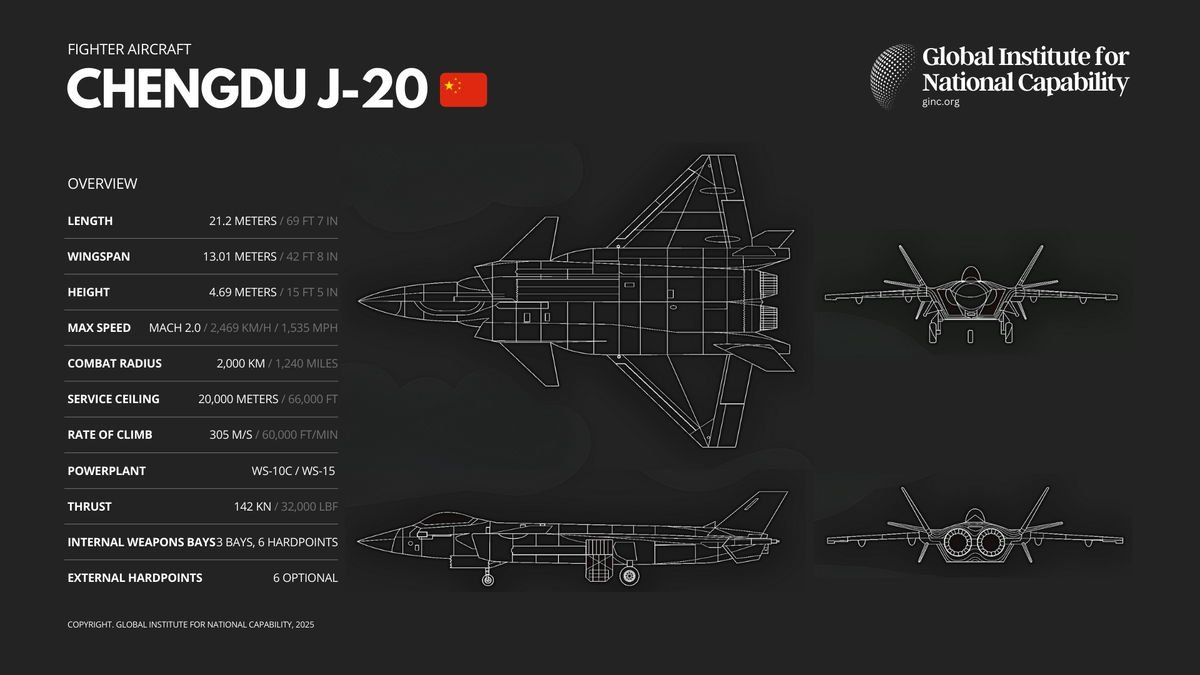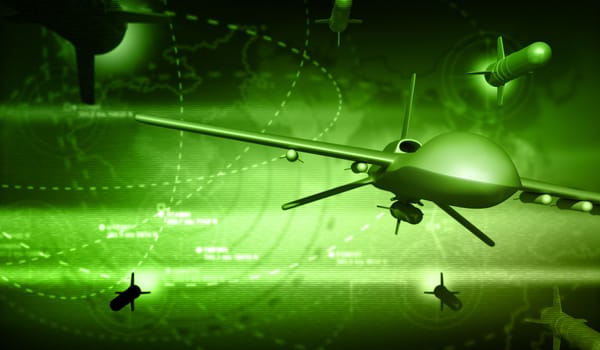Chengdu J-20 'Mighty Dragon' 🇨🇳
The J-20 prioritizes stealth, long-range engagements, and electronic warfare, supporting China’s broader anti-access/area-denial (A2/AD) doctrine.

China’s Fifth-Generation Stealth Fighter
The Chengdu J-20, also known as the “Mighty Dragon,” is China’s first fifth-generation fighter jet and a cornerstone of its modern airpower strategy. Developed by the Chengdu Aerospace Corporation for the People’s Liberation Army Air Force (PLAAF), the J-20 reflects China’s ambitions to project regional strength and strategic deterrence across the Indo-Pacific and beyond. Designed to rival American platforms such as the F-22 Raptor and F-35 Lightning II, the J-20 is a visible symbol of China’s military modernization and indigenous innovation in aerospace technology.
Strategic Role
The J-20 was conceived with one mission in mind: to shift the balance of air superiority. Prioritizing stealth, long-range engagement, and electronic warfare, the J-20 supports China’s broader anti-access/area-denial (A2/AD) doctrine. Its primary objectives include striking high-value aerial and ground targets, evading radar detection, and operating deep into contested airspace. While it was initially seen as an air superiority fighter, the platform’s evolving avionics and multi-role capabilities indicate a shift toward greater flexibility, including potential strike and escort missions.
Program and Development
Work on the J-20 began in the late 1990s, with the first prototype taking flight in 2011. The jet entered service in 2017 and has since undergone multiple upgrades. Key milestones include the integration of domestic engines (WS-10C) to replace Russian-made AL-31Fs and expanded production to equip more frontline units. While still facing challenges related to engine performance and radar cross-section (RCS) refinement, the program has advanced rapidly—supported by China’s state-directed investment in dual-use innovation and aerospace supply chains.
Key Features
- Stealth and Aerodynamics: A chiseled forward fuselage, canard-delta wing design, and internal weapons bays give the J-20 its radar-evading profile.
- Advanced Avionics: Equipped with an AESA radar, electronic warfare systems, and datalinks to integrate with other PLAAF assets.
- Range and Payload: Long combat radius estimated at over 1,100 km and capacity for both air-to-air and precision ground munitions.
- Engines: Currently powered by the WS-10C, with future plans for the more advanced WS-15 to achieve supercruise and enhanced thrust-to-weight ratios.
Global Implications
The J-20 is more than a technical platform—it is a statement of strategic intent. Its deployment signals China’s confidence in producing next-gen military systems and reducing dependence on foreign suppliers. As the PLAAF expands its operational reach and the aircraft’s capabilities mature, the J-20 will play a pivotal role in shaping regional airpower dynamics and influencing future alliance planning in the Asia-Pacific.




